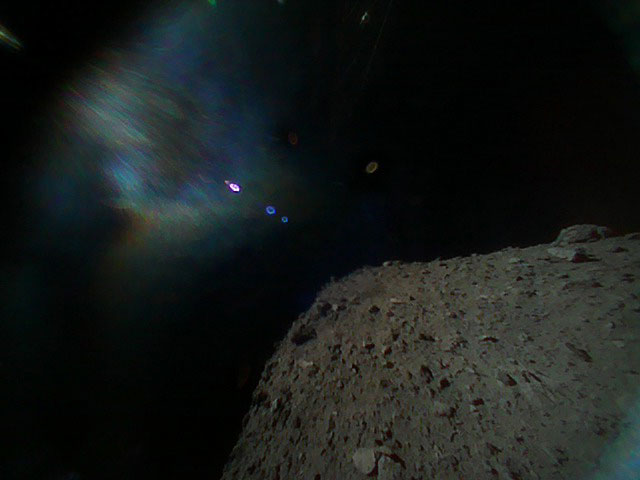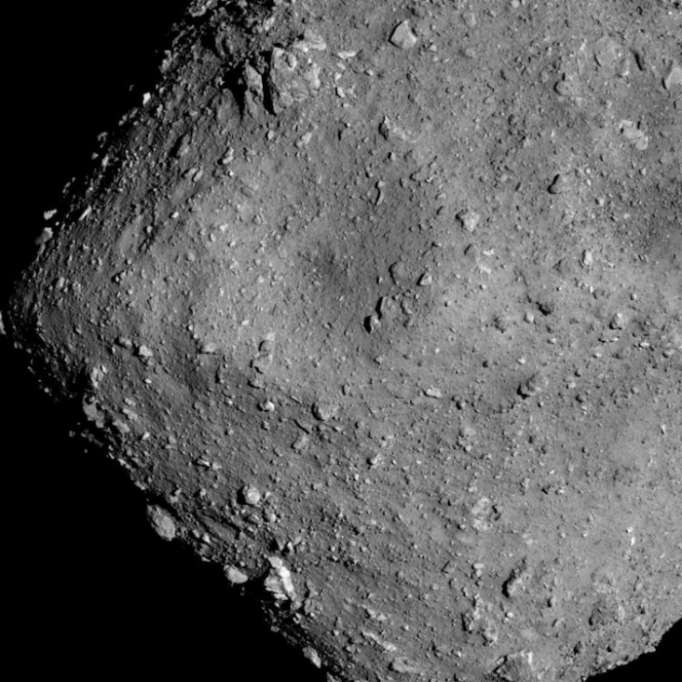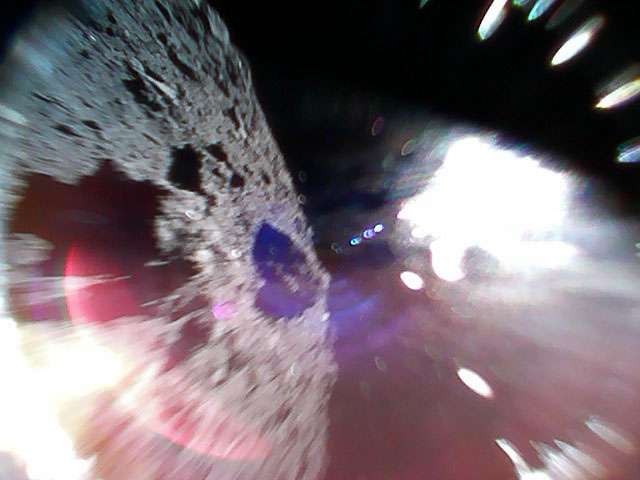The miraculous feat was not an easy one, as the Hayabusa2 spacecraft spent several years chasing the 162173 Ryugu asteroid before it was able to deploy two bots on its surface. Now, years of patience have paid off with the first images of the asteroid's surface beamed back to Earth.
The two small rovers will help Hayabusa2 in its sample-return mission, which will allow scientists to learn more about the Earth-orbiting asteroid. They're designed to take photographs from their wide-angle and stereo cameras and gather data. Hayabusa2 launched in 2014, eventually catching up with the asteroid in late June 2018. On September 21, 2018, the MINERVA II rover was launched, with JAXA confirming that it had touched down successfully and the two aircrafts it's made of—Rover 1A and Rover 1B—were active and taking photos.
As the robots hop around the surface of the asteroid, they snap pictures along the way. The detailed, though sometimes blurry, images are our first up-close look at the surface of an asteroid. Located 174 million miles (280 million kilometers) from Earth, Ryugu measures 0.6 miles (1 kilometer) in diameter. Interestingly, the rocky, craggy surface doesn't look as different as one might expect.
The asteroid itself is made of minerals, ice, and organic compounds. JAXA hopes that by studying the carbonaceous near-Earth asteroid, they'll gain insight into the origins of inner planets and how water and organic compounds on Earth developed. Hayabusa2 will spend a little over a year studying the asteroid, before departing in December 2019. It's estimated that it will take a year for the spacecraft to then return the samples to earth.
The Japanese Space Agency recently landed two rovers on a moving asteroid, making them the first to obtain pictures of an asteroid's surface.

Immediately after separation from the probe, JAXA photographed the Hayabusa 2 probe (top) and Ryugu surface (bottom). The image is blurred because the photo was taken while the rover was in rotation. (Photo: JAXA)

Photo taken immediately after separation from the spacecraft. The surface of the Ryugu is reflected in the lower right. The portion of the top left thin and muddy is due to reflection of sunlight at the time of the photograph. (Photo: JAXA)
The Hayabusa2 spacecraft finally approached the Ryugu asteroid in late June after chasing it for three years.

Ryugu asteroid from an altitude of 3.7 miles (6km). The image was captured with the Optical Navigation Camera – Telescopic (ONC-T) on July 20, 2018. (Photo: JAXA, University of Tokyo, Kochi University, Rikkyo University, Nagoya University, Chiba Institute of Technology, Meiji University, University of Aizu, AIST)
Read the original article on mymodernmet.com.
More about: science


























-1745485667.jpg&h=190&w=280&zc=1&q=100)





















